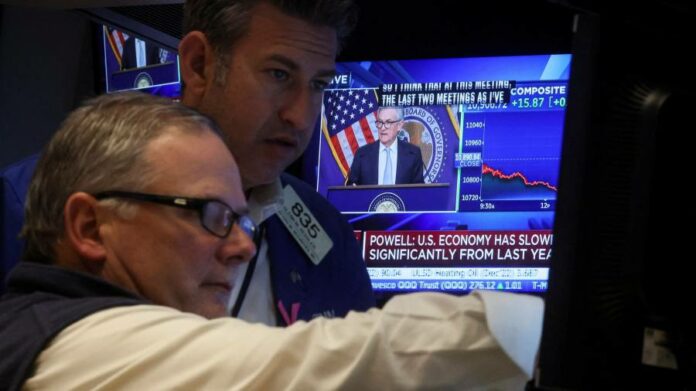The writer is a professor at Columbia Business School, author of ‘The Wall and the Bridge’ and was chair of the Council of Economic Advisers under President George W Bush
US inflation has been extremely high since the economy emerged from Covid-19 (although annual consumer price growth slowed to 7.7 per cent in October). Much analysis of this phenomenon has centred on the mix between “supply” and “demand” factors and Federal Reserve policy errors. While both areas are important, so, too, are fiscal spending excesses. Understanding this can offer lessons to policymakers about what to do now and how best to respond in future crises.
During the pandemic recovery, supply factors such as high energy prices, broken supply chains and business closures played a part in fuelling inflation. Research by Julian di Giovanni at the Federal Reserve Bank of New York suggests that supply shocks may account for 40 per cent of inflation, with the remaining 60 per cent explained by shocks to aggregate demand. Certainly excess demand remains a very important generator of high inflation.
The Fed’s expansionary monetary policy in the post-pandemic period, along with forward guidance and a new framework suggesting the maintenance of these policies, raised demand in an economy hit by supply constraints. Even as early as late 2020, the Fed was arguably behind the curve. By not raising the federal funds rate until spring 2022, it lost control of inflation. But while the central bank can be faulted for misjudging the state of aggregate demand and remaining behind the curve for so long, fiscal policy also contributed significantly to pushing up inflation.
The Covid-19 experience is instructive. While the initial economic shock reflected supply chain disruptions and lockdowns, there were real risks of sharp declines in aggregate demand from job losses and lost production and investment. Fast-moving responses such as the Cares Act, passed in March 2020, focused on maintaining worker incomes and business continuity during the lockdown. Early action did forestall a collapse in aggregate demand but as the economy’s recovery took hold, additional federal spending — particularly the blowout in the American Rescue Act — added to demand in a supply-constrained economy. Again, this proved a recipe for inflation.
Economists, notably John Cochrane of the Hoover Institution, have formalised the link between fiscal policy and inflation. Suppose, Cochrane has argued, that during the pandemic and the recovery, the government significantly increased expenditure, electing not to cut other spending or raise taxes (this is, in fact, similar to the fiscal path followed). And suppose also that the government will not default on Treasury bonds issued. To cover the higher borrowing, “revenue” must come from reduced values of nominal debt via higher inflation. Accommodating the above-baseline spending in the Trump and Biden administrations would require a burst of inflation in the short term to reduce the real debt value.
Under this interpretation, inflation will remain elevated until the cumulative effect on the price level reduces the real value of the debt sufficiently to pay for the higher spending. Because this increase in prices was largely unanticipated, nominal interest rates on Treasury issuances did not at first rise. And, while the price level jump from spending is permanent, inflation should revert to trend if the Fed pursues policies consistent with its 2 per cent inflation objective.
To consider excessive government spending as a culprit along with the Fed’s loose monetary policy, it is useful to draw a contrast with policy in the global financial crisis of 2008 and the subsequent economic recovery. As in the pandemic, the Fed kept short-term nominal rates at zero for a long time and expanded its balance sheet more than fourfold. Both inflation and inflationary expectations remained anchored at around 2 per cent — with actual inflation sometimes lower — during the decade after the onset of the financial crisis. A key difference, though, was that fiscal policy expansion was comparatively weak relative to that of the pandemic recovery.
Particularly following last week’s midterm election results, there are three lessons for today’s policymakers. First, large spending increases in a crisis have consequences for inflation and not just for real aggregate demand in the economy. Second, to reduce the risks of spending blowouts and attendant inflation, policymakers could consider pre-committing to more modest spending in response — on unemployment insurance benefits, individual rebates and/or transfers to state — triggered by changes in output or employment. Finally, despite the temporary fiscal surge, the Fed should pursue monetary policy consistent with its long-term objectives for inflation.






